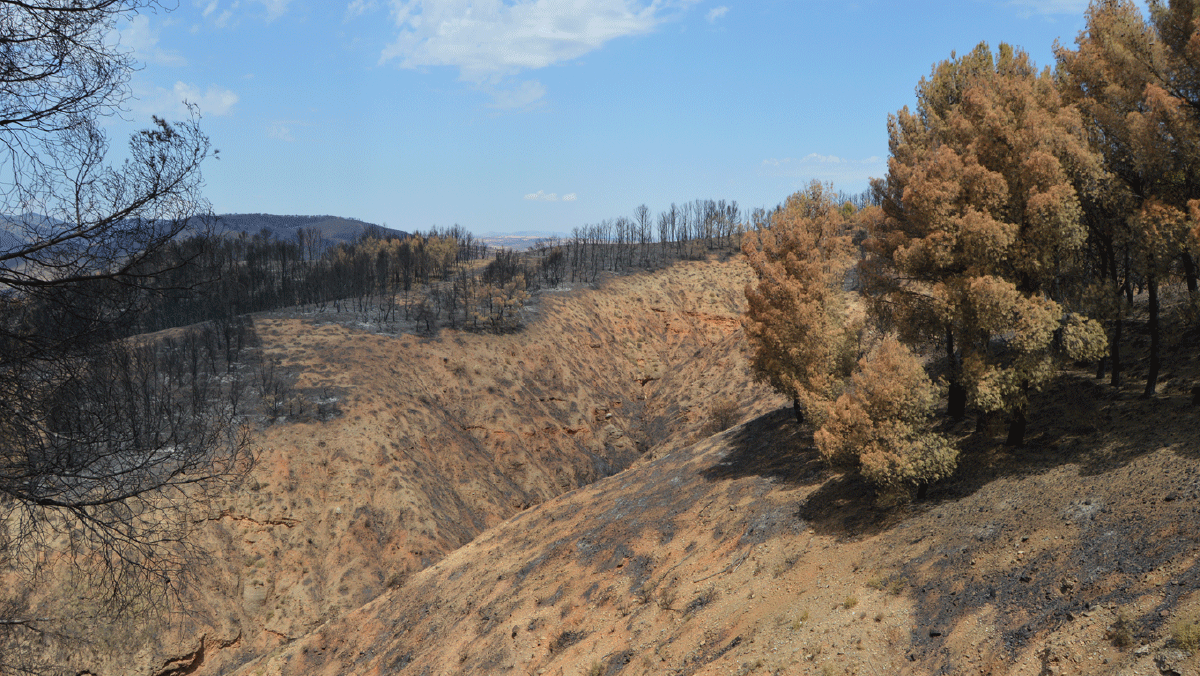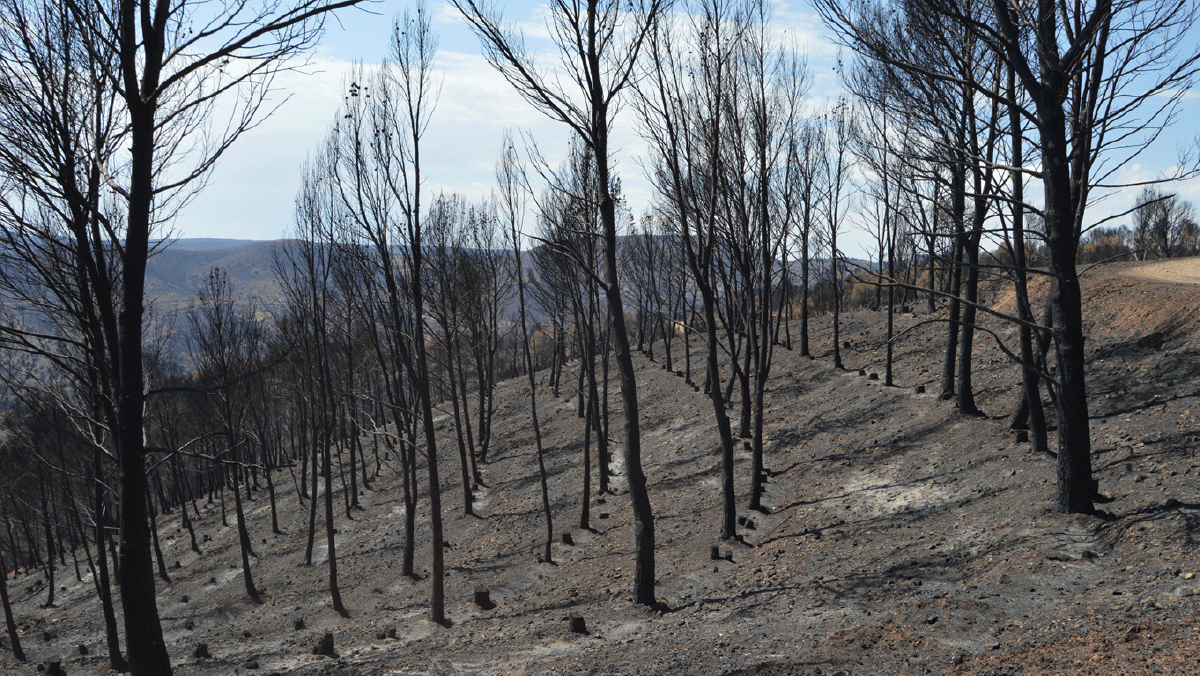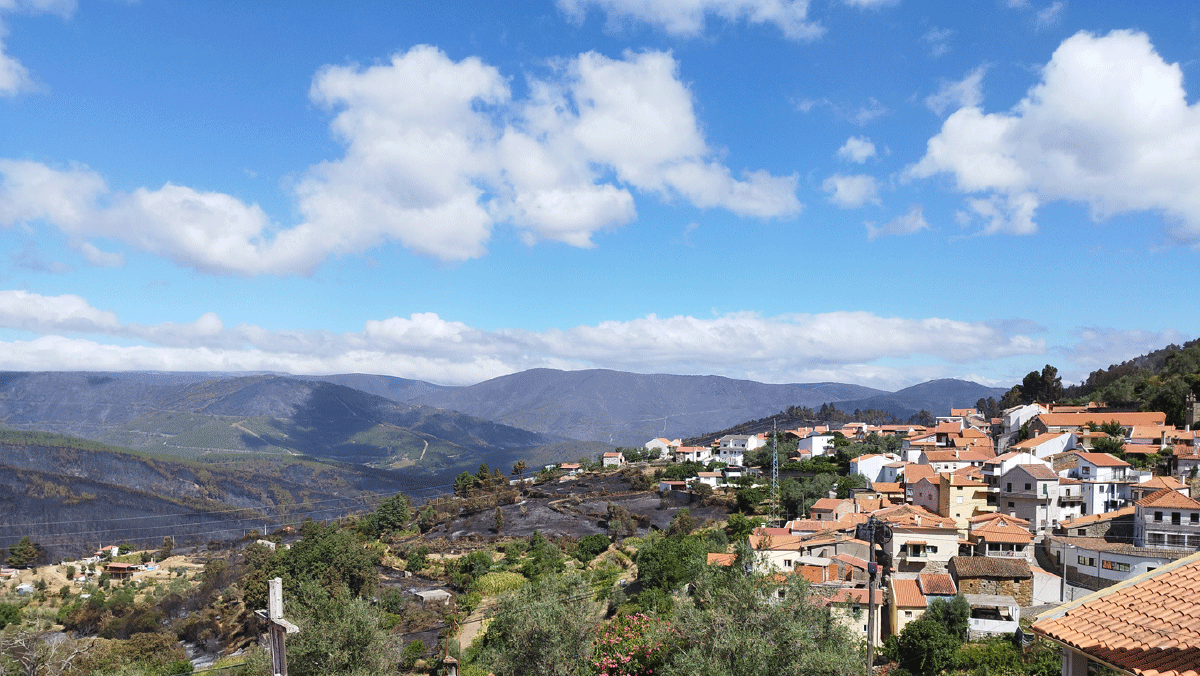Advanced scientific response to the increasing threat of wildfires across Europe
The technical management committee of FirEUrisk has prepared this text to describe the project's activities, which aim to reduce the risk of wildfires

FirEUrisk is an H2020 European Research & Innovation Action. The project aims to develop and evaluate a novel 3-stage management strategy that will update the current approaches to fighting wildfires. The project gathers 38 partners (research centres, academia, authorities, companies, and first responder organisations) from 18 countries.
FirEUrisk’s plan consists of actions for 1) assessing the current wildfire risk landscape, 2) developing strategies to reduce the risk, and 3) evaluating the perspective of the wildfire risk in the context of climate change.
During the summer of 2022, Western and Northern Europe experienced an extreme and prolonged combination of droughts, heatwaves, and very high temperatures, which led to widespread fires. In this text, we summarise the research activities of FirEUrisk that aim to reduce the risk induced by wildfires.

1. Reducing the probability and potential of fire ignitions
In Europe, humans cause the vast majority of fire ignitions. To decrease the number of ignitions, we consider various appropriate levers. These include designing, deploying and evaluating program sessions for professional foresters, firefighters, and farmers to safely and efficiently perform prescribed burnings. The sessions realized in 2021 and 2022 in Italy and France have already proven the interest of these groups in reintroducing an appropriate way to burn fuels in a controlled manner, limiting the wildfire risk.
We are now also focusing on actions for raising awareness and informing citizens about the risk of fires as part of the project. In addition, FirEUrisk plans to develop educational tools to help local citizens to understand fire protection requirements better and become familiar with prevention measures.
2. Land Management Strategies to reduce wildfire risk
The condition and arrangement of fuels can influence the number and intensity of fires affecting a landscape. Land use planning and management can help to reduce the risk of wildfire, the exposure of valuable assets, and the scale of fire events. Different land management strategies, such as the controlled use of grazing and integrated and informed forest management, can contribute to decreasing the continuity of the fuel bed and the resilience of the vegetation. However, the success of any land management strategy in fire occurrence is associated with the physical, ecological, and socio-economic context of the area of implementation.
We at FirEUrisk are preparing maps and guidance for selecting the best-fitting land management strategy, or a combination of strategies, for different regions of Europe. These products support investments and implementing measures that are a good fit for local environmental and socioeconomic conditions. In determining the suitability of various land management strategies, the trade-offs of such strategies are also accounted for. For example, removing undergrowth in forest ecosystems might help to reduce wildfire risk, but it can also have the unintended consequence of negative impacts on biodiversity. These trade-offs are also ecosystem-dependent, making such a management activity suitable to some ecosystems and not others. The guidance we provide at FirEUrisk for land management strategies will help communities choose effective measures and navigate potential trade-offs.
3. Improving response to reduce the risk of high-impact fires
Some fires have a particular impact on societies. Examples include extreme fires, fires in the wildland-urban interface (WUI), and fires in recently concerned ecosystems (mountains, Northern and Eastern Europe). Such fires have increased in the last years and intensively challenge the responders that need to adapt rapidly. In FirEUrisk, we develop the most updated scientific tools to support the responders in addressing such needs. These include tools for extreme fire modelling, smoke emission and dispersion modelling, health impact management, as well as science-based guidelines to fight intense fires, fires in the WUI, and fires in new fire-prone regions.
For example, we are investigating alternative tactics, such as backburning, remote teams (hotshot crews), or heliwater bombing, solutions that could be deployed in Eastern and Northern Europe.

4. Reducing the vulnerability of communities
One of the most significant impacts of forest fires, which has become increasingly important, is the threat to constructions, communities, and human lives. In this task, the aim is to improve the preparedness of the WUI to resist an eventual fire that can potentially affect people and communities. This implies measures to manage fire crises, evacuation requirements, and shelter, as well as post-fire management of forest regeneration to minimize long-term losses.
Three main activities are being developed under this task in the project. The first activity includes the analysis of past fires involving WUI cases to extract lessons that can be integrated into good practices and develop new policies. The second refers to the definition of good practices for risk mitigation in the WUI, considering the protection of infrastructures and properties while considering “build back better” approaches in the restoration planning after fires. The third line of activity relates to the involvement of citizens as a crucial factor in reducing fire risk in the WUI. This includes developing guidelines on designing and implementing citizen engagement strategies and producing training materials to improve citizens’ capacity to contribute to wildfire risk management.
5. Adapt to future fire risks induced by climate change
The 2022 wildfires have shown the potential of future wildfires in the EU: changes in their characteristics in terms of intensity and size of the areas affected, the higher intensity with increased fuel consumption, and long vegetation burning (several days), often leading to stand-replacing fires. Nowadays, wildfire affects constantly regions in Central, Eastern, and Northern Europe that haven’t experienced wildfires (relative to the current fire regime) of such large scale before.
Specialized FirEUrisk teams work on projections of future fire risk conditions by combining land-use and climate scenarios as forcings to fire-enabled Dynamic Global Vegetation Models. The objective is to understand how changes in vegetation growth and mortality generate fuel that increases fire risk and how this situation can provide feedback to recovery and vegetation succession across Europe. When comparing the outcomes of different scenarios, the team will evaluate the changes in the impacts of climate extremes, changes in overall fire regimes under changing vegetation conditions, and the overall potential for adapting to future fire risk, for instance, as regards fuel management aspects. The FirEUrisk will deliver scenario-based data sets allowing experts to explore potential future scenarios and contextualise different options for adapting the European landscapes to climate change.
The technical management committee of the FirEUrisk Project
3rd October 2022
Download the statement as a PDF file.
